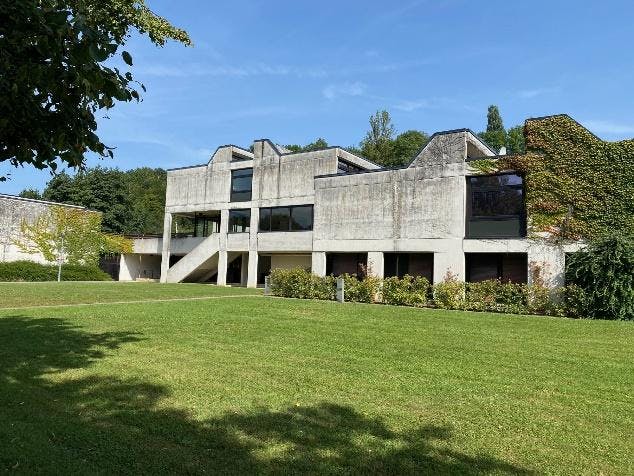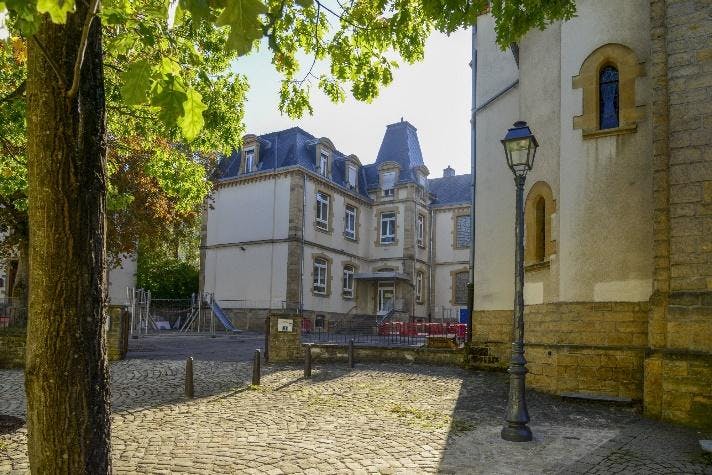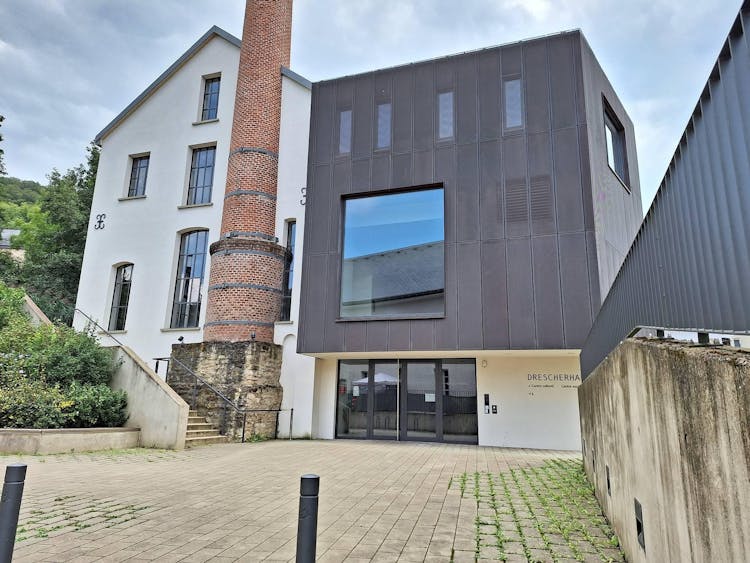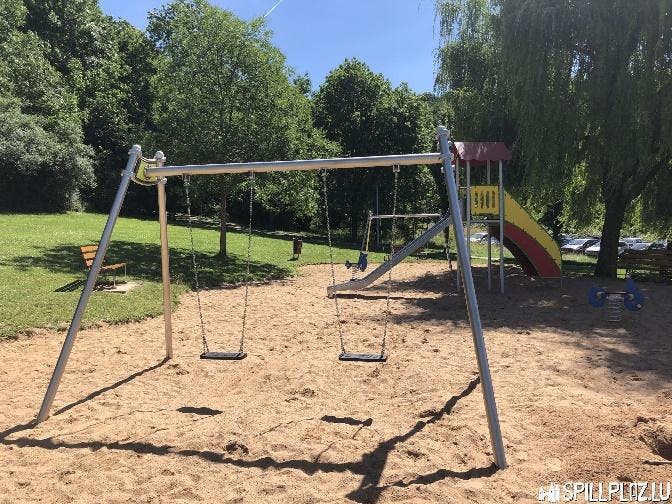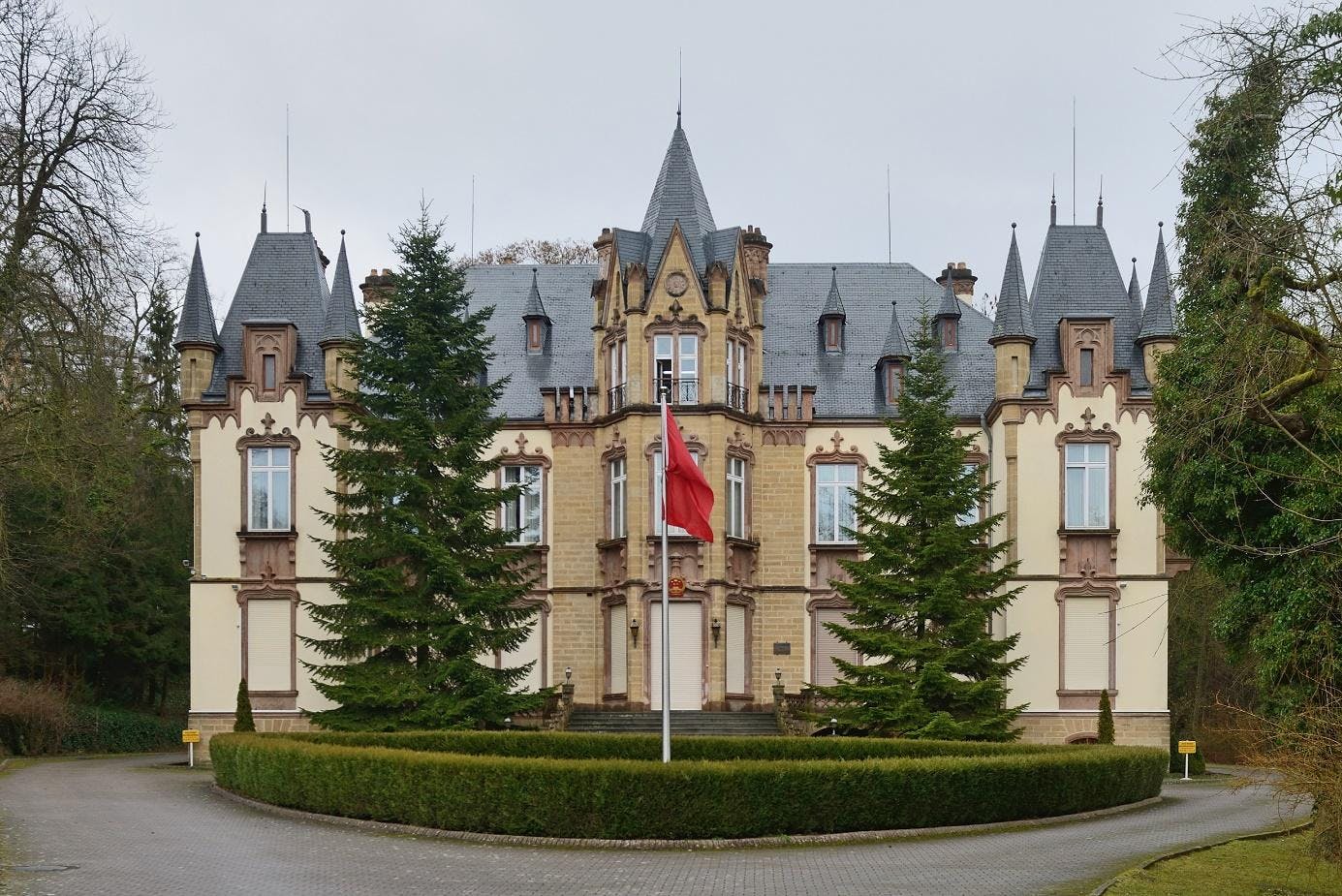
Dommeldange: a spacious green neighborhood in Luxembourg
In this article, we embark on a journey through the historical corridors, explore the vibrant population, weigh the pros and cons of residing in Dommeldange, dissect the area's transport accessibility, take a closer look at its infrastructure, and navigate the nuances of renting and buying real estate.
Nestled in the city's far Northeast, Dommeldange paints a picturesque tapestry on Luxembourg's landscape. Bordered to the south by Weimerskirch and to the east by Eich and Beggen, the neighborhood unfolds into three distinctive entities. The historic central part graces the Alzette Valley, while a newer counterpart crowns the Mont Dommeldange hills at 350 meters, boasting luxurious residences, offices, and hotels. The northern segment, comprising lush forests and agricultural lands, completes the neighborhood's diverse panorama.
General characteristics of Dommeldange
Dommeldange stands out for its village-like atmosphere, further emphasized by the surrounding forests and farmland. The neighborhood's looks can be characterized by a blend of old and modern architecture, where traditional stone houses coexist with contemporary buildings. Its streets, lined with trees, and the presence of lush parks and paths for cyclists and walks, such as Parc Brill, contribute to the friendly atmosphere.
The Alzette River offers many recreational opportunities for residents. In terms of amenities, Dommeldange is well-equipped with schools, supermarkets, restaurants, and leisure centers, all well-served by public transport. The neighborhood stands out for its village-like atmosphere, further emphasized by the surrounding forests and farmland.
Population of Dommeldange neighborhood
As of January 1, 2024, Dommeldange was home to 2,951 residents, constituting 2.2% of the capital's total population.
It is a relatively sparsely populated neighborhood and given its large surface area of 235.56 hectares, the population density is quite low, only 12.5 inhabitants per hectare.
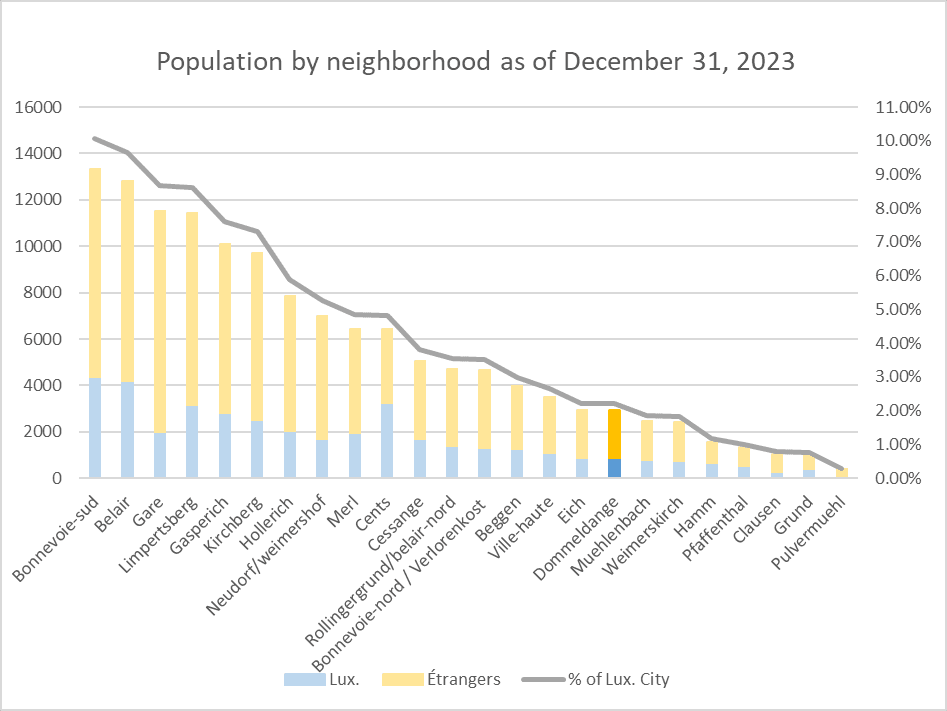
Notably, 71.16% of the residents are foreigners, closely aligning with the capital's average of 70.44%.
Transport accessibility
Nestled strategically, Dommeldange offers a variety of transportation options that enhance connectivity and ease of mobility for its residents.
Let's explore the various modes of transportation available, each catering to different preferences and needs:





You can check the route of each bus line in detail on the interactive map provided by the city of Luxembourg and get detailed instructions to get from one point to another on their route planner page.
Renting and buying real estate
Dommeldange presents an appealing real estate landscape with competitive prices. Purchase prices stand at 9,277 euros/m², notably lower than the city's average of 12,243 euros/m².
Similarly, rental prices are attractive and well below the capital's average. Whether buying or renting, Dommeldange offers a cost-effective housing solution within the vibrant fabric of Luxembourg's real estate market.
For purchase prices stand at
For renting prices stand at
Applications, search and profound advice in our guide to rent in Luxembourg

Infrastructure of the neighborhood
Dommeldange's infrastructure weaves a tapestry of diverse amenities, from schools and healthcare to sports facilities and recreational spaces. The Rue Nicolas Hein sports complex and the CHL Eich Hospital, located just adjacent to the neighboring Eich district, stand as key landmarks. This primarily residential neighborhood boasts numerous green areas, creating a tranquil backdrop. However, it grapples with a notable drawback, its scarcity of supermarkets, requiring residents to explore neighboring areas for comprehensive shopping options.
If you're considering making Luxembourg your new home, we encourage you to explore our range of articles that look in depth at the different city communes and neighborhoods.
Pros and cons of living in Dommeldange
Nestled in lush greenery, Dommeldange embraces a serene environment, offering tranquil living and family-friendly spaces away from the city's hustle. The neighborhood boasts numerous rest areas and walking trails, providing a harmonious blend with nature.
Its strategic location proves advantageous for those working in the Kirchberg business district or commuting beyond the city, facilitated by the proximity of the Dommeldange train station. Affordability shines as a highlight, with relatively lower purchase and rental prices compared to neighboring districts. At the same time, however, Dommeldange suffers from a lack of shops and supermarkets, forcing residents to travel to nearby neighborhoods for basic necessities.
What can you find in this neighborhood of Luxembourg City
The neighborhood is well-equipped with various facilities and services, enhancing the quality of life for its residents, families with kids, and other people. Educational institutions are readily available, including primary and secondary schools even with specialization on artistic talents like the Lycée des Arts & Métiers. For shopping needs, Dommeldange offers around ten shops, supplemented by a selection of bars, cafes, and restaurants. The area boasts a range of leisure options, including playgrounds, a cultural center, sports facilities, parks, cycle paths, and even its own pétanque track!
Within the confines of Dommeldange, a comprehensive educational landscape unfolds, catering to the diverse needs of its residents. Dommeldange hosts a public primary school named the Dommeldange School, providing foundational education for children. Adjacent to the church, a public daycare center in the heart of the neighborhood ensures the care for working parents.
For secondary education, Dommeldange proudly hosts one of the three campuses of Luxembourg's Lycée des Arts et Métiers. Established in 1896, it stands as the oldest technical secondary school in the country. Originally situated in Limpertsberg and known as Lycée Technique des Arts et Métiers, it underwent a significant transformation in July 2015 when the former Uelzecht Lycée in Dummeldeng merged with it.
Multicultural educational Initiatives in Dommeldange
The Lycée Uelzecht caters to children and youth of Polish descent, operating under the auspices of the Polish Embassy and following the Polish educational system. Additionally, the Romanian Weekend School aims to impart the Romanian language, culture, and traditions to children in Luxembourg from Romanian or mixed families
Dommeldange School
Dommeldange childcare center
Dommeldange Arts and Crafts School
Uelzecht High school
Romanian Weekend School
Dommeldange, primarily a residential enclave, offers a modest yet engaging cultural experience through its cultural and social center installed in the former Drescher carpentry workshop. With a capacity of approximately 100 people, this center hosts diverse events throughout the year, providing residents with opportunities to engage in cultural and social activities within the neighborhood.
- Address: 26a Rue du Château
- Phone: (+352) 47 96 27 90
- Website: vdl.lu
Learn more about Luxembourg's culture and traditions in our special guide.
While Dommeldange itself lacks clinics or hospitals, the CHL Eich Hospital is conveniently situated just a stone's throw away, nestled in the neighboring district of Eich. Remarkably close, it stands right at the border, allowing residents to reach it on foot from the center of Dommeldange in under 10 minutes.
Part of the Centre Hospitalier de Luxembourg since 2004, CHL Eich is one of four major establishments under this healthcare umbrella. The others, CHL Centre, CHL Maternity, and CHL KannerKlinik, are clustered together in the Rollengergronn-Belair-Nord neighborhood along Route d’Arlon. The Eich center, historically known for ophthalmology, otolaryngology, and orthopedics, has expanded its services post-merger to include internal medicine, sports and preventive medicine, acute geriatrics, and palliative care.
CHL Eich (Center Hospitalier de Luxembourg):
- Address: 78 Rue d'Eich, Eich Luxembourg.
- Phone: (+352) 44 11 12.
- Website: eich.chl.lu.
Dommeldange is a haven for outdoor enthusiasts, offering various play areas and natural retreats. Within the heart of the neighborhood, children can enjoy playgrounds situated at the childcare center next to the church, and additional spaces are available at the primary school, including a unique skatepark.
Playground Rue du Château
Skatepark
Dommeldange School Playground
Pétanque court
Secret garden of the Chinese Embassy
A noteworthy site is the garden tucked behind the imposing Collart family castle, now the Embassy of China. This publicly accessible park features a path leading from a swan-filled pond to a charming waterfall. Adjacent to the park, a pétanque court provides a delightful space for friendly games and relaxation.
For those seeking a more immersive natural experience, the forested areas of Eecherfeld and Mont Dommeldange beckon, offering ideal terrains for hiking enthusiasts. Dommeldange's diverse outdoor offerings cater to both playful escapades and serene nature exploration.
Dommeldange boasts a dynamic sports scene centered around the Rue Nicolas Hein sports complex, catering to a variety of athletic pursuits. One standout presence is the Badminton Club Europeen, a prominent club with over 100 members representing 24 different nationalities. With four adult teams competing in the National Championship and their top-tier team participating in the premier league, it stands as one of the city's largest badminton clubs and the sole Luxembourg City club in the National Championship.
Heya, fellow kids!
Adjacent to the sports complex, enthusiasts of skateboarding can enjoy a dedicated skatepark for honing their skills.
For those seeking personalized fitness experiences, Marcus Neal Fitness on Route d'Echternach offers semi-personal training sessions in small groups of five individuals. This approach provides a close-to-personalized training experience at more accessible prices, enriching the diverse sports offerings available in Dommeldange.
Hall omnisports Dommeldange
Badminton Club Europeen
Skatepark
Marcus Neal Fitness
Historical overview
The name Dommeldange traces its roots, as per Théodore de la Fontaine, to a bird inhabiting the reed-covered expanses of the region. Originally a part of the former Eich municipality, Dommeldange joined the City of Luxembourg on July 1, 1920, marking a pivotal shift in its administrative identity.
Repurposed castle
Industrial times
Russian Embassy
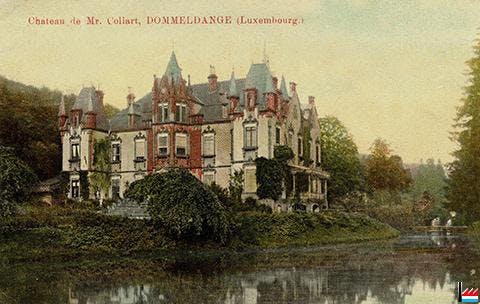
Frequently Asked Questions (FAQ)
What makes Dommeldange a desirable residential neighborhood?
Dommeldange's allure lies in its tranquil atmosphere and family-friendly environment. With ample green spaces, diverse schools, and recreational facilities like the Rue Nicolas Hein sports complex, it caters to a quality lifestyle. Proximity to the scenic Alzette River and historic landmarks, including the Embassy of China within the Collart family castle, adds to the neighborhood's charm, making it an ideal choice for those seeking a peaceful yet vibrant living experience.
What healthcare facilities are accessible in Dommeldange?
While Dommeldange itself lacks medical facilities, the CHL Eich Hospital in the neighboring district offers comprehensive healthcare services. Located just steps away, it provides residents convenient access to various medical departments, ensuring their well-being. The hospital, part of the Centre Hospitalier de Luxembourg, is integral to the neighborhood's healthcare infrastructure.
How is the real estate market in Dommeldange?
Dommeldange's real estate market stands out for its affordability and attractive pricing. With purchase prices at 9,277 euros/m², significantly below the city average, and rental rates at 28.20 euros/m², the neighborhood offers a cost-effective housing solution.
Is shopping convenient in Dommeldange?
While Dommeldange boasts some restaurants and miscellaneous shops, it faces a notable drawback, the absence of supermarkets. Residents often venture into neighboring areas for comprehensive grocery shopping, highlighting the neighborhood's reliance on nearby communities for fulfilling daily needs.
What remarkable buildings are located in Dommeldange?
Dommeldange is graced by the historic Collart family castle, now the Embassy of China, adding a touch of grandeur to the neighborhood. This impressive structure, with its lush garden and adjacent pétanque court, stands as a testament to the area's rich heritage.
Source: fr.wikipedia.org, www.vdl.lu, www.justarrived.lu, www.luxembourg-city.com, www.chl.lu, fr.wikipedia.org, www.immotop.lu
We took photos from these sources: industrie.lu, Wikipedia, VDL, Google Maps, Badminton Club Europeen, Marcus Neal Fitness, Spillplaz, CHL, Dommeldange Arts and Crafts School, Uelzecht High school, Romanian Weekend School
